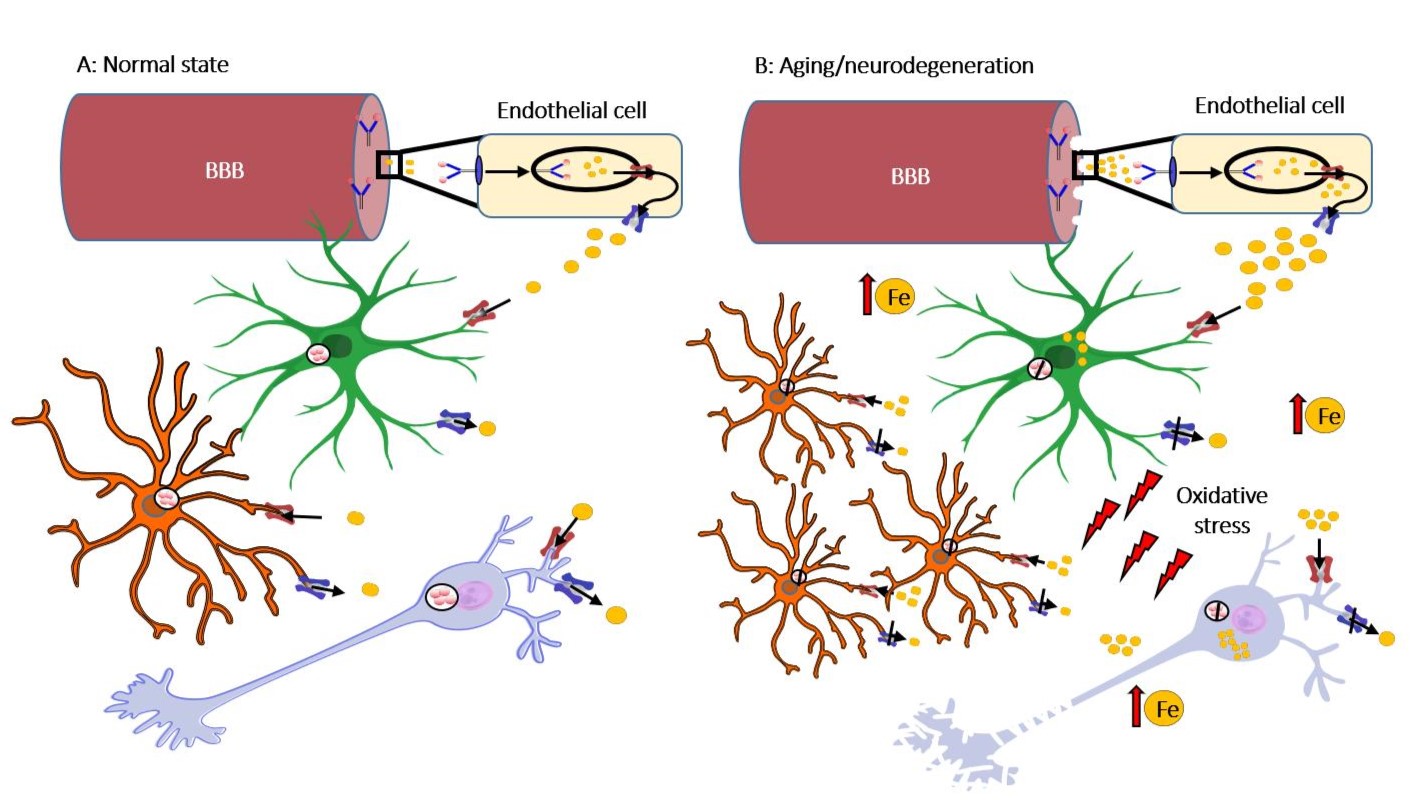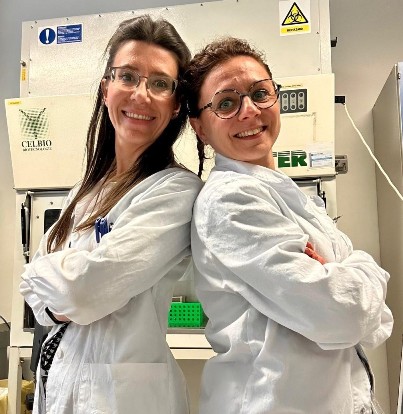
Aging and Disease
, June 2024
Brain Iron Dyshomeostasis and Ferroptosis in Alzheimer'sDisease Pathophysiology: Two Faces of the Same Coin
Dr.
Serena Stanga
and
Mariarosa Mezzanotte
Research Group:
Brain Development and Disease
Iron is a fundamental metal involved in many cellular and biological processes in all organisms, humans included. Iron homeostasis is finely regulated both systemically and at the level of the Central Nervous System (CNS) to avoid its imbalance; indeed, iron excess is extremely toxic for cells and triggers detrimental oxidative stress increase.
Nevertheless, factors such as genetics, environment, and aging can alter the normal iron metabolism leading to diseases, including neurodegenerative disorders such as Alzheimer's disease (AD). AD is the most widespread neurodegenerative disorder of the CNS. Although the precise pathogenesis of AD is not clarified yet, different studies conducted both in mouse models and in patients reported brain iron accumulation, resulting in cognitive, memory, and motor decline.
Moreover, the expression of many proteins involved in iron metabolism appears to be altered in the brain, leading to iron deposition and promoting AD progression. In the context of AD, amyloid beta (Aβ) and tau hyperphosphorylation, the two hallmarks of the disease, can promote brain iron deposition and subsequent neuronal death. Indeed, although the mechanism of neuronal loss is not fully understood, several evidence demonstrated the involvement of the iron-dependent form of cell death defined as “ferroptosis”.
In this review, we deepened about the role of iron and iron deregulation in the CNS with a particular focus on its involvement in the pathogenesis of AD. We also discussed the potential role of ferroptosis as a new pathological mechanism related to dementia. Finally, we reviewed recent strategies for treating AD based on the use of iron chelators, antioxidants and ferroptosis inhibitors, paying close attention to iron disorders and the development of new drugs capable of preventing AD.








